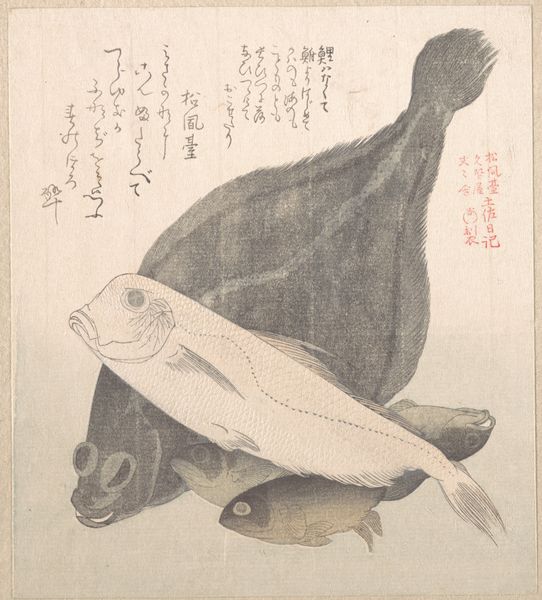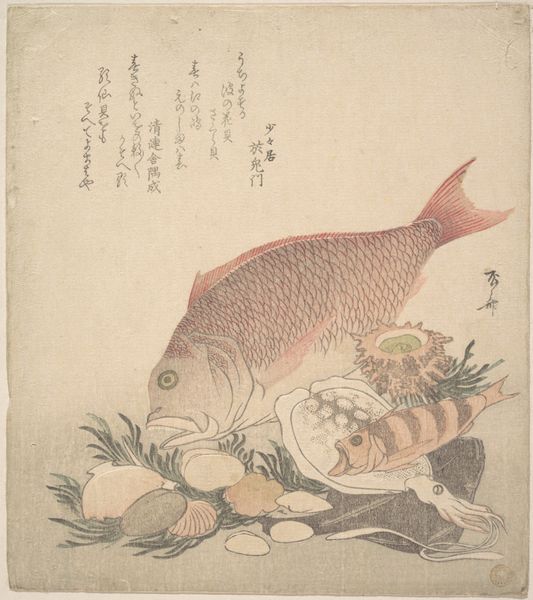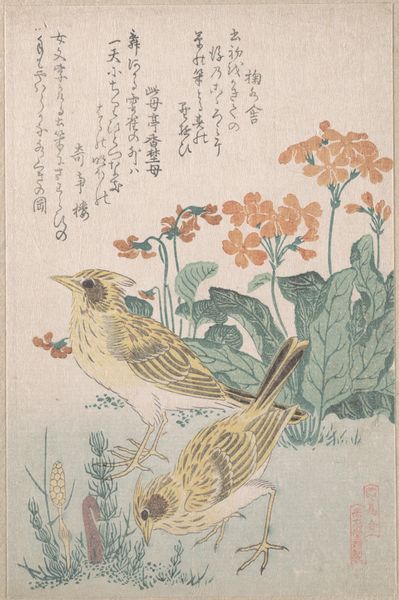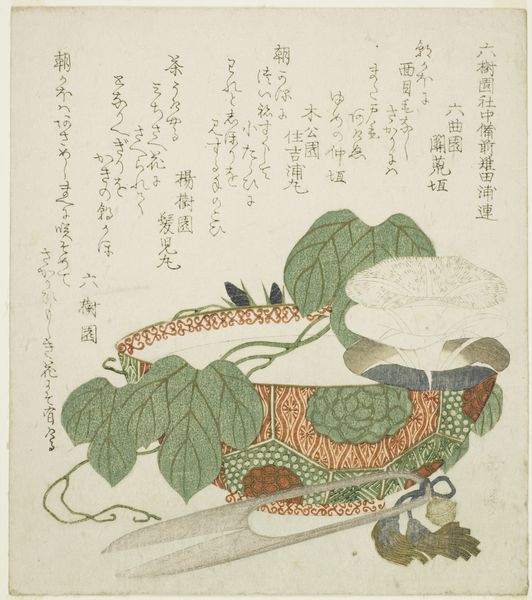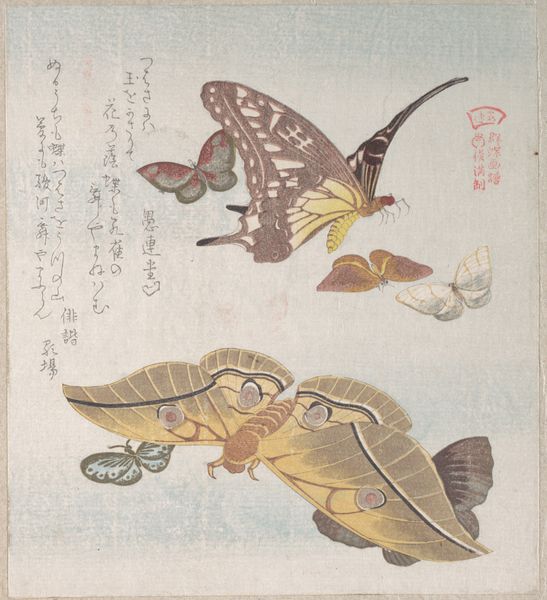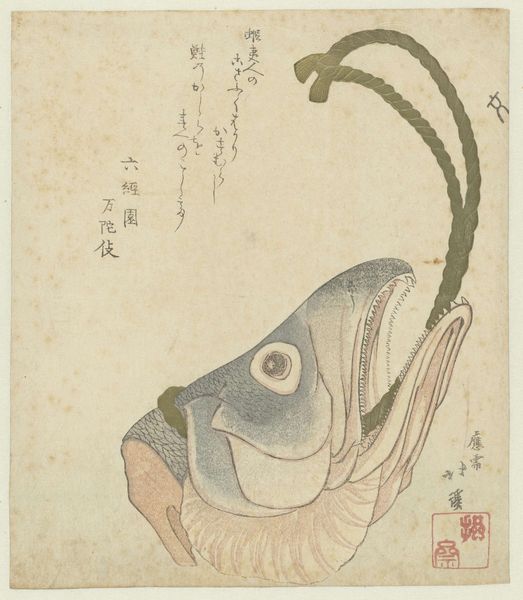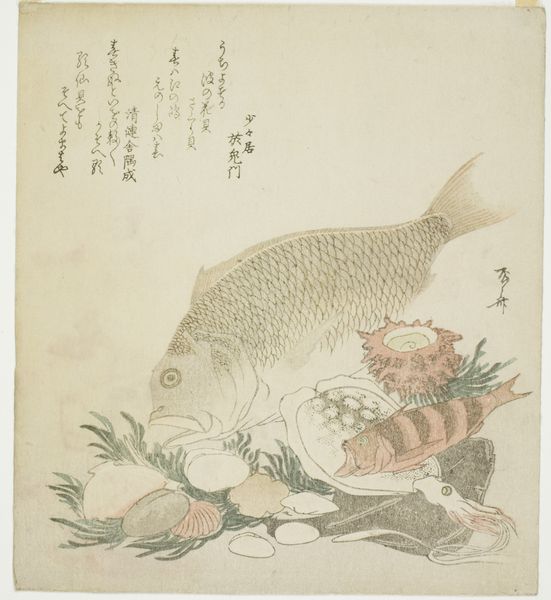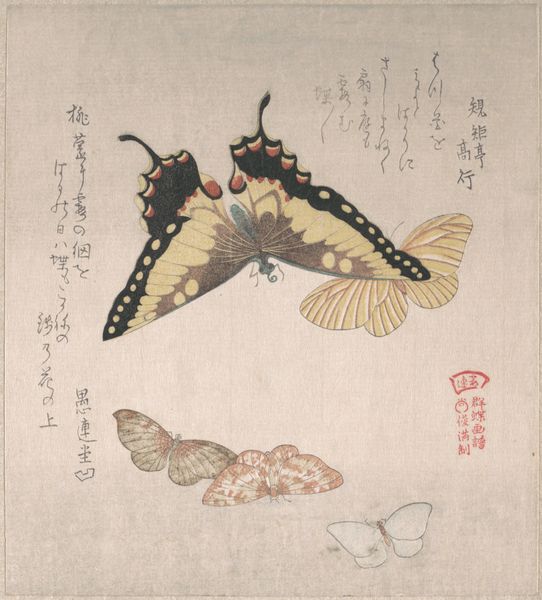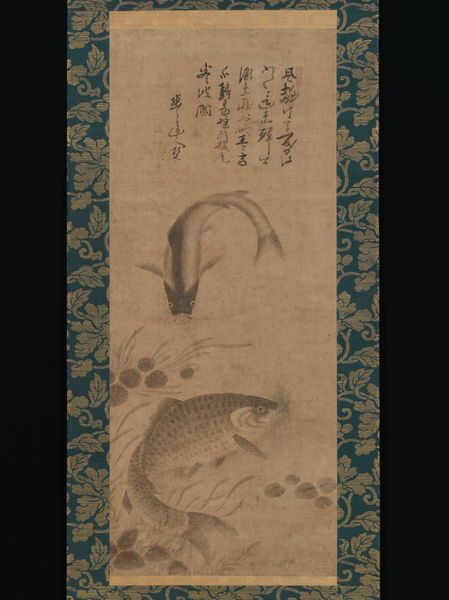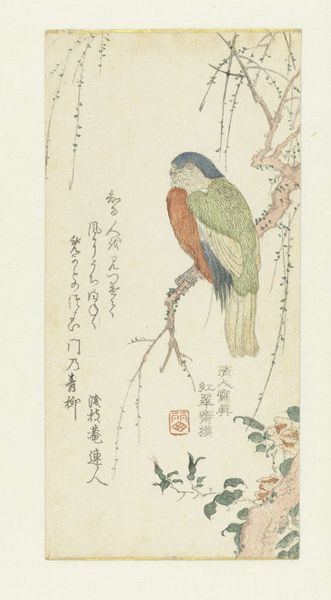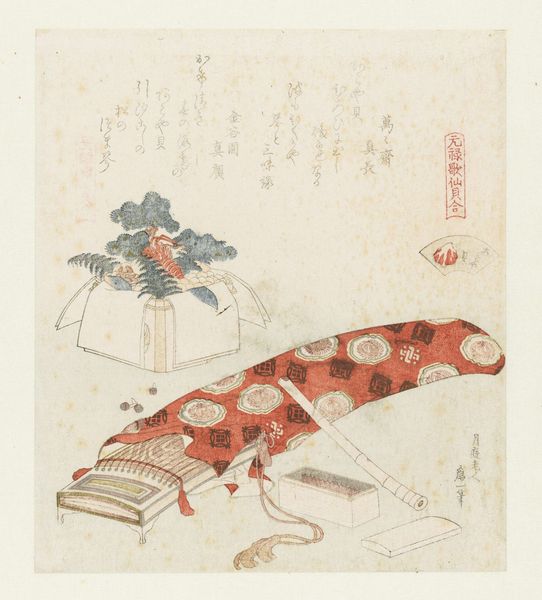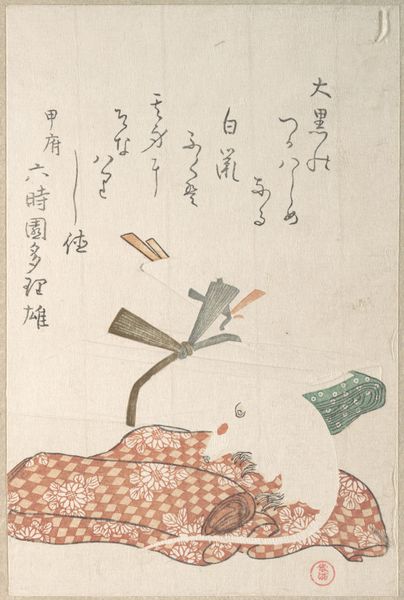
print, woodblock-print
#
water colours
# print
#
asian-art
#
ukiyo-e
#
figuration
#
woodblock-print
#
line
#
watercolour illustration
#
watercolor
Dimensions: height 210 mm, width 179 mm
Copyright: Rijks Museum: Open Domain
Curator: Looking at Totoya Hokkei's "Three Fish and Bracken," circa 1815-1820, currently held in the Rijksmuseum. The initial impact is rather serene. Editor: Yes, serene, but also subtly unsettling. The fish seem almost suspended, or even…trapped. There’s a tension between the delicate watercolour and the starkness of their situation. Curator: That resonates with its ukiyo-e context; often these works depicted fleeting moments. This print’s title doesn't just showcase fishes, but includes "bracken." It suggests a specific environmental encounter and season. What labor and materials would've been required to realize the woodblock print? Editor: Precisely. Thinking of the labor: from the initial artist’s sketch, to the skilled wood carvers, and finally, the printers carefully layering colors—it’s a collective act of production, reflecting both craft and social hierarchies of the time. And the materials themselves, the paper made from plant fibers, the inks sourced from minerals and plants… Curator: How might class consciousness appear within Ukiyo-e during this era, and how did socioeconomic struggles get filtered through visual media? Editor: While on the surface they celebrate leisure and beauty, we can read beneath, noting the complex realities of Edo society, the shifting power dynamics… Ukiyo-e had to grapple with censorship but nonetheless served as a pressure release valve through visual means for many communities that struggled under rigid socioeconomic structures. Curator: Hokkei studied under Hokusai, whose influence is definitely felt. Yet, beyond formal elements, how might we consider Hokkei's position relative to broader artistic movements in Ukiyo-e and his contributions to cultural perceptions about gender? Editor: His art depicts everyday lives that can inform dialogues on masculinity and labor during that historical context, making us examine themes that went underrecognized at the time. Through his craft we gain knowledge of class struggle experienced within Japanese communities back then. Curator: It's precisely this intersectional approach which keeps our readings fresh and allows viewers to engage in new political interpretations of Japanese art history. Editor: And the very fact that this survives as an object, speaks to its durability and cultural significance.
Comments
No comments
Be the first to comment and join the conversation on the ultimate creative platform.
